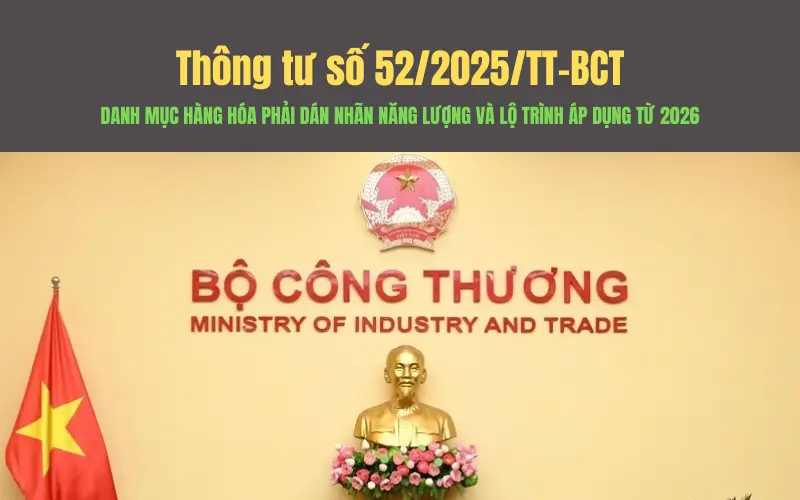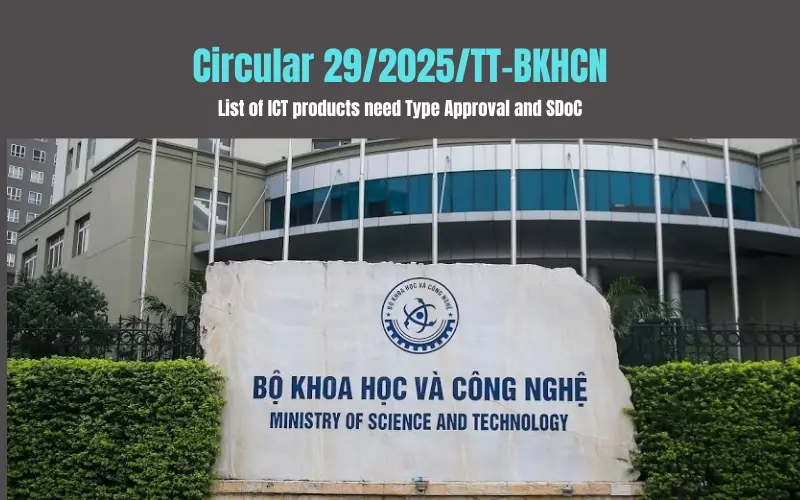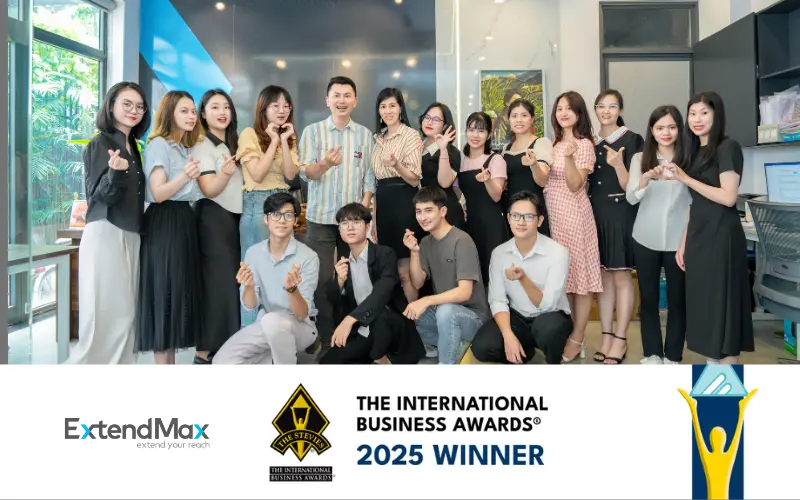Re-export temporary import is a term in the field of international trade and customs, which refers to the process of temporarily importing goods into the territory of a country with the intention of re-exporting them abroad for a certain period of time without being subject to the usual import duties.
1. What is temporary import for re-export of goods?
1.1 Concept
Temporary import is the act of bringing goods into the territory of Vietnam for a certain period of time and is temporary. This is different from conventional import, where goods are usually retained in the country for distribution or use in production and business activities of enterprises and sold to the Vietnamese market.
Meanwhile, temporarily imported goods are not intended for distribution or consumption in the domestic market but will be exported to other countries after a short time.
Regarding re-export, this is the next step of the temporary import process. Once the goods have been cleared and imported into Vietnam, they will continue to be sent to a third country.
This means that the goods are exported twice: first from the country of origin, then from Vietnam to another location, and that is the process of re-exporting.
Pursuant to Article 29 of the 2005 Commercial Law on temporary import, re-export, temporary export and re-import of goods, it is specified as follows:
- Temporary import or re-export of goods means goods brought from abroad or from special areas located in the territory of Vietnam which are considered separate customs areas according to the provisions of law into Vietnam, with import procedures carried out into Vietnam and procedures for the main export of such goods out of Vietnam.
- Temporary export or re-import of goods means goods that are taken abroad or brought into special areas located in the territory of Vietnam which are considered as separate customs areas according to the provisions of law, with procedures for export out of Vietnam and procedures for re-import of such goods into Vietnam.
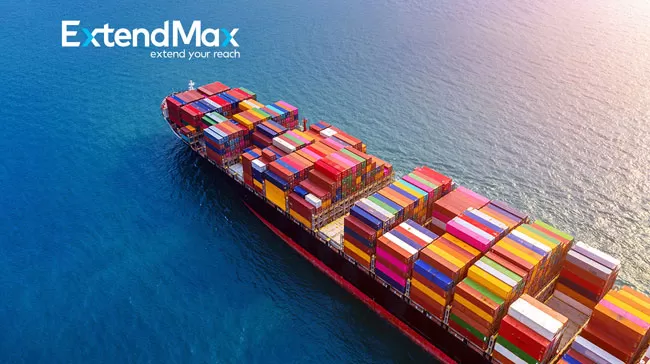
Temporary import means the introduction of goods into the territory of Vietnam for a certain period of time and is temporary
>>> See more: Detailed instructions on procedures for applying for an old IT goods processing license
1.2 Characteristics of temporary import for re-export
| Temporary import | Goods are only imported into Vietnam for a certain period of time, not for consumption in the domestic market. Temporarily imported goods must be re-exported from the importing country for a specified period of time, usually specified by the customs authority of that country. There are specific regulations on the duration of temporary import for re-export, usually not more than 60 days, which can be extended but not more than 2 times and each time not exceeding 30 days
|
| Diverse Purposes | It can be for business, processing, repair, warranty, display, participation in fairs, exhibitions, or use in specific projects. |
| Re-export | After completing the purpose of temporary import, the goods must be exported back abroad, usually under a separate contract. |
| Not subject to normal import tax | Temporarily imported goods are not subject to import duties, including value-added tax (VAT) and other taxes, provided that they are re-exported within a certain period of time.
|
Note:
- This process applies only to certain types of goods and must comply with the customs authority's conditions and regulations.
- The temporary import for re-export must comply with the provisions of the customs law.
- Goods temporarily imported for re-export are not allowed to change the mode of transport and means of transport when transported from the import border gate to the export border gate, unless supervised by the customs office.
1.3 Forms of temporary import for re-export
| Business | This form allows businesses to import goods but not for consumption in Vietnam but for export to other countries, for the purpose of making profits. |
| Warranty, maintenance, rental, borrowing | Goods imported for warranty, maintenance, rental or borrowing, then re-exported.
|
| Recycling, warranty on request | Goods imported for recycling or warranty at the request of foreign traders, then re-exported |
| Displaying and introducing at fairs and exhibitions | Goods imported for display and introduction at trade fairs and exhibitions, then re-exported. |
| Humanitarian and other purposes | Goods imported for humanitarian or other purposes, then re-exported |
1.4 Types of goods temporarily imported for re-export in Vietnam
Currently, the types of goods temporarily imported for re-export in Vietnam are extremely diverse, usually machinery, equipment and construction facilities,... All of them must not be on the list of export banned or temporarily suspended from export. Goods allowed to be temporarily imported for re-export will be based on lease and loan contracts signed by Vietnamese enterprises together with foreign partners for production and construction.
Enterprises also need to pay attention to the items on the list of items banned from temporary import for re-export, to avoid temporary import for re-export of the following items:
- Goods banned from temporary import for re-export and border transfer under treaties to which Vietnam is a signatory
- Used consumer goods with a high risk of trade fraud
- Items with a high risk of environmental pollution, which can cause epidemics or greatly affect human health and life
- Hazardous industrial waste, waste scrap,...
According to the latest State regulations, types of goods temporarily imported for re-export in Vietnam will not be listed in Appendix VI, List of goods banned from trading in temporary import for re-export of Decree No. 69/2018/ND-CP. Businesses need to avoid these items, before learning more about the procedures for temporary import for re-export.
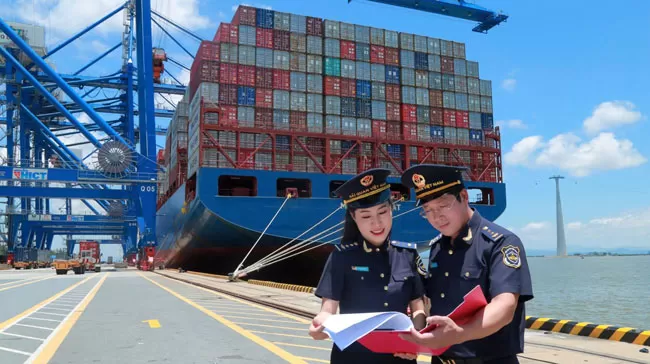
Types of goods temporarily imported for re-export in Vietnam
>>> See more: 10 cases where it is allowed to import used IT equipment
2. Regulations on temporary import for re-export
According to the provisions of Article 13 of Decree 69/2018/ND-CP on temporary import for re-export, specifically as follows:
- Vietnamese traders are entitled to temporarily import and re-export goods regardless of their business lines according to the following regulations:
+ Goods temporarily imported for re-export are subject to conditions, traders must satisfy the conditions specified in Section 2 of this Chapter.
+ Goods banned from export or import; goods temporarily suspended from export or import; goods that have not been allowed to be circulated and used in Vietnam; goods subject to management by measures of export quotas, import quotas, tariff quotas, export and import licenses, except for cases of automatic export and import licenses, traders must be granted temporary import and re-export business licenses by the Ministry of Industry and Trade. Dossiers and procedures for issuance of licenses are specified in Articles 19 and 20 of this Decree.
+ In case goods do not fall into the provisions of Points a and b of this Clause, traders shall carry out procedures for temporary import or re-export at customs offices.
- For foreign-invested economic organizations, they are only allowed to temporarily import and re-export goods as prescribed in Article 15 of this Decree, and are not allowed to carry out temporary import and re-export of goods.
- Goods temporarily imported for re-export shall be subject to inspection and supervision by customs offices from the time of temporary import until the actual goods are re-exported out of Vietnam. Do not divide goods transported by containers during the process of transporting goods from the border gate of temporary import to the area under the supervision of the customs office, the re-export location at the border gate or border crossing as prescribed. In case it is necessary to change or divide goods transported by containers for re-export due to transportation requirements, regulations of customs offices shall apply.
- Goods temporarily imported for re-export shall remain in Vietnam for no more than 60 days from the date of completion of customs procedures for temporary import. In case it is necessary to extend the time limit, the trader shall send a written request for extension to the Sub-department of Customs where the temporary import procedures are carried out; the duration of each extension shall not exceed 30 days and shall not exceed two or 2 extensions for each shipment of goods temporarily imported for re-export. Past the above-mentioned time limit, traders must re-export goods out of Vietnam or destroy them. In case of importing into Vietnam, traders must comply with regulations on import management of goods and taxes.
- Temporary import and re-export business shall be carried out on the basis of two separate contracts: the export contract and the import contract signed with the trader of the exporting country and the importing country. An export contract may be signed before or after an import contract.
- The payment of goods by the mode of temporary import and re-export must comply with regulations on foreign exchange management and the guidance of the State Bank of Vietnam.
Regarding the ban on temporary import for re-export, it is specified in Article 12 of Decree 69/2018/ND-CP as follows:
- Promulgate the list of goods banned from temporary import, re-export or border transit in Appendix VI of this Decree.
- The list of goods specified in Clause 1 of this Article does not apply to goods traded in the form of goods transported directly from the exporting country to the importing country, without going through Vietnam's border gate.
- In case of preventing environmental pollution, epidemics, affecting human health and life, illegal transshipment, risk of trade fraud, the Minister of Industry and Trade shall specifically decide on the suspension of temporary import, re-export, border transshipment and publicly announce the list enclosed with the HS code of goods.
Temporary import for re-export in Vietnam is thriving thanks to increased trade demand, but there are also many potential risks due to rampant implementation and increasingly common violations. Faced with this situation, the authorities tightened the inspection, requiring temporarily imported goods to be re-exported on time. Otherwise, the goods will be stored at the customs supervision area according to the provisions of Clause 5, Article 82 of Circular 38/2015/TT-BTC (amended by Circular 39/2018/TT-BTC).
In addition, goods temporarily imported for re-export must not change the means and mode of transportation during the journey from the border gate of import to the border gate of export, unless the transfer of vehicles takes place at the border gate and is supervised by customs.
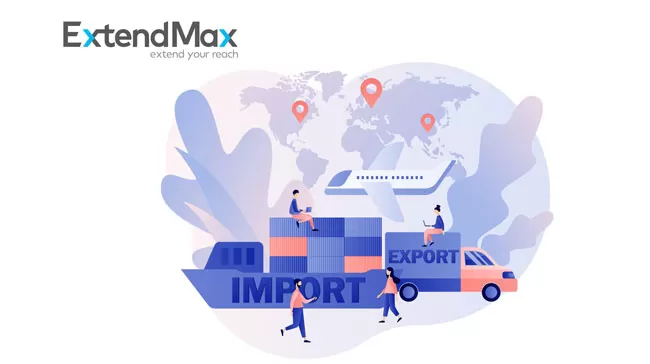
>>> See more: What is import consignment? Support for consignment import in Vietnam
3. Distinguishing temporary import for re-export from traditional import and export, temporary export for re-import
|
| Temporary Import - Re-export | Normal Import - Export | Temporary Export - Re-import |
| Notion | Goods are temporarily imported into Vietnam for use for a certain period of time (e.g. exhibition goods, borrowed equipment, goods for warranty,...), then re-exported from the territory of Vietnam without being subject to import tax. The purpose may include processing, assembly, remodeling, or exhibition. | The export or import of official goods for purchase, sale, consumption or long-term use, and is subject to import duties as prescribed by the importing country. | Goods from Vietnam are temporarily exported abroad, after a certain period of time, they will be imported back into Vietnam. This can apply to repairs, exhibitions, or product finishes. |
| Character |
|
|
|
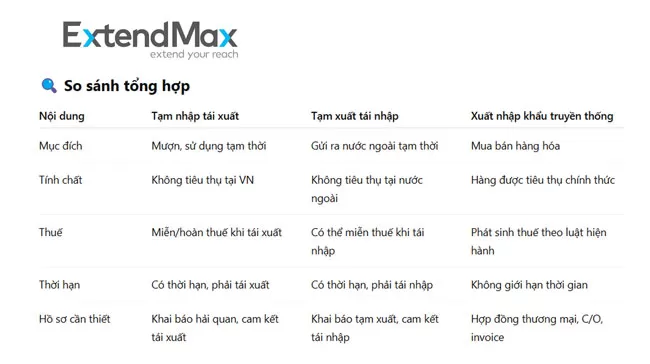
4. Conditions for goods permitted to be temporarily imported for re-export
In order to carry out temporary import for re-export in accordance with the law and effectively, enterprises need to pay attention to the following important conditions:
- Compliance with legal regulations: Goods must not be on the list of prohibited imports and exports and must not violate regulations related to security, social order, public health, environment and social ethics according to Vietnamese law.
- Clear purpose of use: Temporarily imported goods need to have a specific and valid purpose such as serving exhibitions, repairs, processing or activities permitted by law. Enterprises must have a detailed plan for the process of using and re-exporting goods.
- Duration of storage in Vietnam: Goods traded in the form of temporary import for re-export may only be stored for a maximum of 60 days from the date of completion of temporary import procedures, unless extended by the customs office.
- Financial security: Businesses may be required to submit guarantees or deposits to ensure timely re-export, and at the same time provide provisions for taxes and fees incurred if the goods are not re-exported in accordance with regulations.
- Registration procedures and dossiers: Enterprises must register with customs authorities and provide complete dossiers as required. The customs authority will review, verify and issue an approval decision based on the transparency and validity of the dossier.
- Quarantine and quality compliance: Goods must meet the requirements for plant and animal quarantine and product quality control according to current regulations.
- Update new regulations: Businesses need to closely monitor new notices and guidelines from customs authorities to ensure that temporary import for re-export is always compliant and avoid legal risks.
>>> See more: Register for import inspection | Nationwide Support – Cost Savings
5. Procedures for temporary import for re-export
5.1 Places to carry out procedures for goods temporarily imported for re-export
The enterprise shall carry out customs procedures for goods temporarily imported for re-export at the place where the customs office receives, registers and inspects the dossier for carrying out customs procedures, then conducts the physical inspection of goods and means of transport (specified in Clause 1, Article 22 of the 2014 Customs Code).
Enterprises shall make customs declarations for goods temporarily imported for re-export at the head office of the Customs Department or the head office of the Customs Sub-Department.
5.2 Dossiers to be prepared for goods temporarily imported for re-export
- Customs declarations shall be prepared according to the form issued by the Ministry of Finance
- Transport documents for goods transported by sea, air, rail – 01 copy
- Documents bearing the certification seal of the competent authority for the organization of fairs and exhibitions (except for temporary import – re-export to introduce products) – 01 photocopy
- License to import goods, documents notifying the results of specialized inspection according to relevant regulations – 01 original
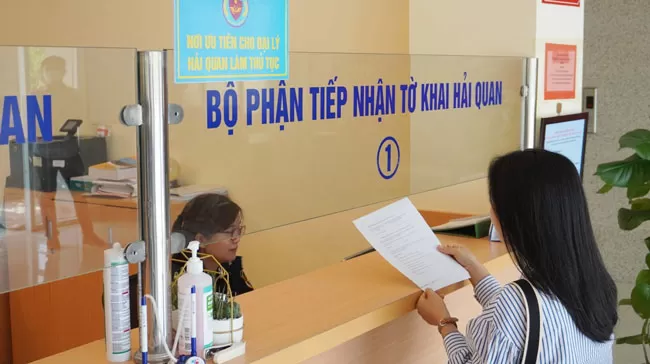
Procedures for temporarily imported goods for re-export
5.3 Steps to carry out procedures for temporarily imported goods for re-export
Step 1: Prepare a complete and valid dossier
Enterprises need to gather a set of dossiers including:
- An application for temporary import for re-export (according to the form or at the request of the customs office);
- Purchase and sale contracts, lease contracts, service contracts related to temporary import for re-export;
- Commercial invoices;
- Detailed list of goods;
- Bill of Lading/Air Waybill;
- Import license (if the goods are on the list of specialized management);
- Documents proving the purpose of use (e.g. invitation to participate in the exhibition, repair contract, etc.);
- Certificate of origin (if any);
- Other documents as required (such as quarantine certificates, quality inspection, etc.) if applicable).
Step 2: Open an e-customs declaration – Temporary import registration
- Enterprises declare temporary import customs declarations on the VNACCS/VCIS system.
- Submit a paper dossier to the border-gate Customs Sub-Department or the place managing the CFS warehouse where the goods are stored.
- Customs receives, checks information and decides on customs clearance if the dossier and goods are suitable.
Step 3: Carry out temporary import procedures – Put goods into the designated warehouse/yard
- After customs clearance, the goods will be transported to the storage area (bonded warehouse, CFS warehouse, or registered location).
- Goods may be preserved, processed, recycled, assembled and repaired (depending on the type) under the supervision of customs offices.
- During the retention period, enterprises need to comply with the conditions for inspection, reporting or registration (if any).
Step 4: Prepare the re-export dossier and open the re-export customs declaration
Before the re-export deadline, enterprises need to:
- Opening a re-export customs declaration (similar to temporary import) on the VNACCS/VCIS system;
- Prepare dossiers including: application for re-export, commercial invoice (export), list, bill of lading, papers related to the handling of goods in the process of warehousing (if any);
- Submit the dossier to the customs sub-department of the place of temporary import or re-export (depending on the case);
- Customs offices shall inspect, verify and carry out procedures for permitting the re-export of goods.
Step 5: Re-export goods from the territory of Vietnam
- The enterprise transports goods to the border gate for re-export in accordance with the declaration.
- Customs offices at border gates shall supervise and certify the fact that goods have been re-exported.
Step 6: Close the dossier of temporary import for re-export
- After completing the re-export, the enterprise must notify and submit documents certifying the export to the customs sub-department that has temporarily imported it.
- The customs authority shall compare the dossier of temporary import – re-export, certify the fulfillment of obligations, close the dossier and process tax refund or guarantee refund (if any).
Additional points to note:
- If the enterprise uses the form of guarantee, it is necessary to ensure that the guarantee validity period covers the entire cycle of temporary import – re-export.
- Some types of goods such as e-waste, used goods, IT products containing encryption, etc. may be banned or restricted from temporary import – it is necessary to double-check the specialized regulations before implementation.
5.4 Deadline for declaration and submission of declaration
Pursuant to Clause 1, Article 25 of the Customs Code 2014, the time limit for declaration and submission of customs declarations is prescribed as follows:
For exported goods, the declaration shall be submitted after the goods are collected at the place notified by the customs declarant, at least 04 hours before the means of transport leave the country. For exported goods sent by express delivery service, at least about 02 hours before the means of transport leave the country.
For imported goods, the declaration shall be submitted before the date of arrival of goods at the border gate or within 30 days from the date of arrival of goods at the border gate. The time limit for submission of customs declarations for means of transport shall comply with the provisions of the Customs Code 2014.
Above is ExtendMax's guidance on procedures for temporary import for re-export. In case you still have questions or need to use ExtendMax's consulting services, please contact us for support.
Contact for advice:
EXTENDMAX VIETNAM CO., LTD
Business Address: P903, 9th Floor, Tower A, Sky City Tower, 88 Lang Ha, Lang Ward, Hanoi, Vietnam
Head office: ExtendMax Villa, C01-L18 An Vuong, Duong Noi Urban Area, Duong Noi Ward, Hanoi
Hotline: 0915 836 555 | Hanoi: 024 6666 3066
Email: consultant@extendmax.vn | phuong.tran@extendmax.vn
If you find our guide article useful and valuable to apply in practice, please support us by rating at the bottom of the article, leaving a comment, and sharing the article to friends or people who work in the same import industry, logistics. Your review will be a great motivation for us to write more detailed, valuable procedural instructions for importing businesses.

_thumb_720.jpg)
